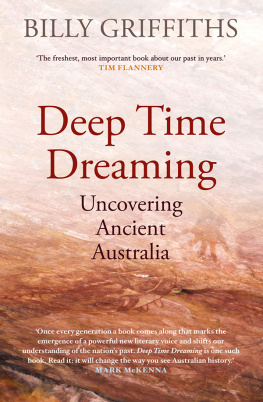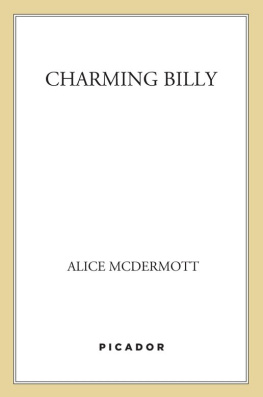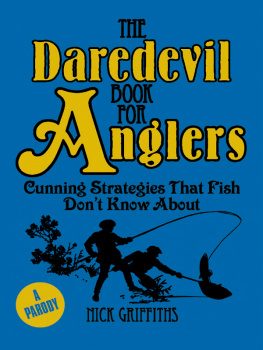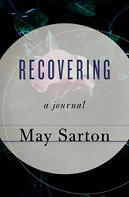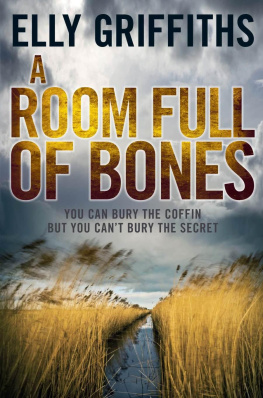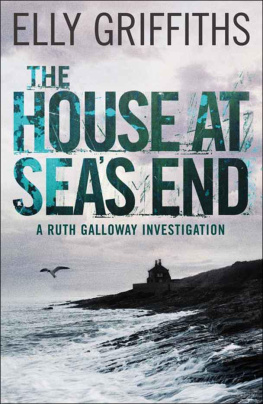Billy Griffiths - Deep Time Dreaming
Here you can read online Billy Griffiths - Deep Time Dreaming full text of the book (entire story) in english for free. Download pdf and epub, get meaning, cover and reviews about this ebook. publisher: Schwartz Publishing Pty. Ltd, genre: Art. Description of the work, (preface) as well as reviews are available. Best literature library LitArk.com created for fans of good reading and offers a wide selection of genres:
Romance novel
Science fiction
Adventure
Detective
Science
History
Home and family
Prose
Art
Politics
Computer
Non-fiction
Religion
Business
Children
Humor
Choose a favorite category and find really read worthwhile books. Enjoy immersion in the world of imagination, feel the emotions of the characters or learn something new for yourself, make an fascinating discovery.
- Book:Deep Time Dreaming
- Author:
- Publisher:Schwartz Publishing Pty. Ltd
- Genre:
- Rating:5 / 5
- Favourites:Add to favourites
- Your mark:
- 100
- 1
- 2
- 3
- 4
- 5
Deep Time Dreaming: summary, description and annotation
We offer to read an annotation, description, summary or preface (depends on what the author of the book "Deep Time Dreaming" wrote himself). If you haven't found the necessary information about the book — write in the comments, we will try to find it.
Deep Time Dreaming — read online for free the complete book (whole text) full work
Below is the text of the book, divided by pages. System saving the place of the last page read, allows you to conveniently read the book "Deep Time Dreaming" online for free, without having to search again every time where you left off. Put a bookmark, and you can go to the page where you finished reading at any time.
Font size:
Interval:
Bookmark:
PRAISE FOR DEEP TIME DREAMING
Once every generation a book comes along that marks the emergence of a powerful new literary voice and shifts our understanding of the nations past. Billy Griffiths Deep Time Dreaming is one such book. Deeply researched, creatively conceived and beautifully written, it charts the expansion of archaeological knowledge in Australia for the first time. No other book has managed to convey the mystery and intricacy of Indigenous antiquity in quite the same way. Read it: it will change the way you see Australian history.
MARK MCKENNA
Deftly weaving together biography, history and literature, an immense variety of Australian landscapes and ecologies with the many and complex strands of archaeology, Griffiths brilliantly charts the history of modern Aboriginal archaeology in Australia. Deep Time Dreaming is beautifully written, utterly fluid, with the clarity and feeling of a writer who has mastered both his material and the analytical power of narrative. Rich and absorbing, at times spell-binding.
GRACE KARSKENS
A remarkable book, and one destined, I believe, to become a modern classic of Australian history-writing. Written in vivid, evocative prose, this book will grip both the expert and the general reader alike. It tells a story of physical, political and cultural challenge and discovery, where fascinating individuals encounter and decipher awe-inspiring ancient places. Sensitive and scrupulous, the book does full justice to the achievements and concerns of the Indigenous peoples who shaped and inscribed this ancient land, portraying them as living agents rather than static objects of archaeological study. Respectful of the complexities and technical difficulties of archaeological practice, Billy nevertheless manages to convey its soaring excitements and epiphanies. Both ancient and modern Australia have here found a truly worthy historian.
IAIN MCCALMAN
A brilliant and reflective history of Australian archaeology in its Elizabethan age of exploration, when discovery of a continents deep human past changed a nations historical imagination.
MIKE SMITH
What a revelatory work! If you wish to hear the voice of our continents history before the written word, Deep Time Dreaming is a must-read. The freshest, most important book about our past in years.
TIM FLANNERY

Published by Black Inc.,
an imprint of Schwartz Publishing Pty Ltd
Level 1, 221 Drummond Street
Carlton VIC 3053, Australia
www.blackincbooks.com
Copyright Billy Griffiths 2018
Billy Griffiths asserts his right to be known as the author of this work.
ALL RIGHTS RESERVED.
No part of this publication may be reproduced, stored in a retrieval system, or transmitted in any form by any means electronic, mechanical, photocopying, recording or otherwise without the prior consent of the publishers.
ISBN 9781760640446 (paperback)
ISBN 9781743820384 (ebook)

Cover design by John Canty
Cover photograph by Crystal Egan / Alamy Stock Photo
Text design and typesetting by Tristan Main
In honour of the
original discoverers,
explorers and colonists of Australia
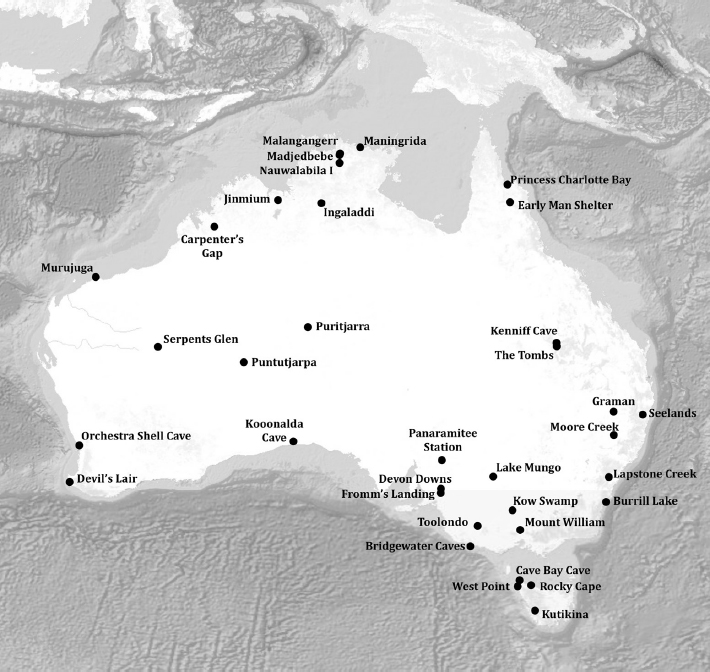
INTRODUCTION
The Old World
A ustralias human history began over 60,000 years ago. The continent was discovered by a group of voyagers who travelled across a vast passage of water to a land where no hominid had roamed before. Over millennia, they explored and colonised every region, transforming the terrain as they moved, making the country their own through language, song and story. They harnessed flame to create new ecosystems, dug the earth to encourage crops, and built water controls to extend the natural range of their resources. They thrived in the extreme aridity of the central deserts and hunted in the glacier-filled gorges spreading from the Tasmanian ice cap. They enjoyed times of regional abundance, endured great droughts and adapted to millennia-long floods that saw the sea level rise about 125 metres. They watched territories disappear, lakes dry, volcanoes erupt, dunefields form and species come and go. Theirs is a remarkable story of transformation and resilience. Perhaps a billion people have lived in Australia, historian and archaeologist John Mulvaney estimated to Arrernte filmmaker Rachel Perkins in the early 2000s. I remember his eyes twinkling, Perkins recalls, as they observed me grappling with the project to which he had given his life: understanding the depth of Australias humanity.
When Mulvaney began his fieldwork on Australian soil in January 1956, excavating a rock shelter at Fromms Landing (Tungawa) near the mouth of the Murray River, it was widely believed that the first Australians had arrived on this continent only a few thousand years earlier. They were regarded as primitive a fossilised stage in human evolution but not necessarily ancient. The expectation, famously expressed by Robert Pulleine, was that excavation would be in vain as everything points to the conclusion that [Aboriginal people] were an unchanging people, living in an unchanging environment. In the decades since, Australian history has been pushed back into the dizzying expanse of deep time. The human presence here has been revealed to be more ancient than that of Europe, which was colonised by Homo sapiens some 40,000 years ago, and the Australian landscape, far from being terra nullius, is now recognised to be cultural as much as natural, imprinted with stories and law and shaped by the hands and firesticks of thousands of generations of Indigenous men and women. The New World has become the Old.
Australians tend to have an uneasy relationship with the history of this continent. Of the three strands of our national story the Indigenous, settler and multicultural pasts it is the first that we most struggle to comprehend and accommodate. This is partly because Indigenous culture remained for so long outside the national gaze, creating a blindness about both the violence of dispossession and the stories of survival; it is partly because the depth and diversity of Indigenous history has only recently been recognised by anthropologists, archaeologists, historians and linguists; and it is partly because the magnitude of that history the sheer antiquity of humanity in Australia is difficult to fathom. The human mind may not have evolved enough to be able to comprehend deep time, American writer John McPhee reflects. It may only be able to measure it.
This book began out of frustration with my own failures of But this is not where Australian history began. Keenly aware of the limitations of documents, I embarked upon an informal field apprenticeship in the craft of those scholars who deal in deep time.
I earned a place on my first few excavations as the camp manager and cook. By day I would trawl through ancient kitchens, and by night I would cook for a team of hungry archaeologists. The research for this book has taken me to archaeological sites in every state and territory in Australia. I have sieved for weeks on end beside an outcrop of the Arnhem Land escarpment, sorting stones from bones, shell from charcoal; I have excavated in a shelter on a rocky rise in the Western Desert, watching wild camels roam the arid plains below; and I have dug square holes on the urban fringes of Melbourne, Perth and Sydney, uncovering finely worked stone tools under car parks, shopping malls and market gardens. Beneath a thin veneer, the evidence of ancient Australia is everywhere, a pulsing presence.
Next pageFont size:
Interval:
Bookmark:
Similar books «Deep Time Dreaming»
Look at similar books to Deep Time Dreaming. We have selected literature similar in name and meaning in the hope of providing readers with more options to find new, interesting, not yet read works.
Discussion, reviews of the book Deep Time Dreaming and just readers' own opinions. Leave your comments, write what you think about the work, its meaning or the main characters. Specify what exactly you liked and what you didn't like, and why you think so.

